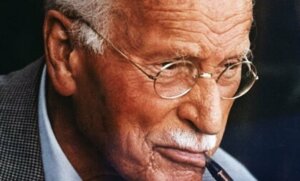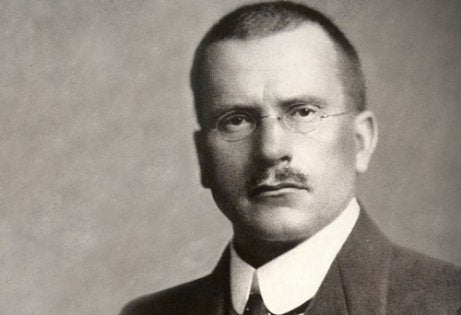Carl Jung: Biography of the Analytical Psychology Pioneer


Written and verified by the psychologist Valeria Sabater
Carl Jung was one of the most prominent psychologists in history. His legacy is a fascinating sort of alchemy in which analytical psychology, the collective unconscious, spirituality, humanism, and mythology are all connected. For this pioneer of dream analysis, understanding the psyche meant, above else, unraveling the self: making the unconscious conscious.
When thinking about Jung, it’s common for concepts such as archetypes, synchronicity, or the above-mentioned collective unconscious to come to mind instantly. Yet one thing people often neglect about him and other remarkable figures of the 20th-century psychology is that they were, first of all, great thinkers.
Carl Jung was an outstanding figure in this regard. During the last days of his life, he made a series of reflections that are highly inspiring to this day. To him, psychology was a basic tool for human beings; it was the self-knowledge channel that helped understand the origin of one’s own shadows and the challenging fears that are limiting in life.
Human beings are capable of unleashing the most terrible wars and the most irrational conflicts. However, getting to know the psyche a little more, as well as the energy of the mind’s architecture, will let us live a more enlightened, respectable, and happy life, according to Jung. Because knowledge is a revelation and it’s freedom.
“Your visions will become clear only when you can look into your own heart. Who looks outside, dreams; who looks inside, awakes.”
-Carl Jung-

Jung’s childhood: when one dream changes everything
Carl Gustav Jung was born on July 26, 1875, in Kesswil, Switzerland. His father was a protestant clergyman, and his mother, Emilie Preiswerk, spent long periods of time in institutional confinement due to various psychiatric disorders.
Jung had three siblings, but they passed away at an early age. In the midst of this instantly bleak scenario, young Carl didn’t take long to develop a solitary and observant character. He adored nature, history, philosophy, and withdrawing into his own inner world.
Something that was very clear to him from very early on is that he didn’t want to follow the same religious path his father and grandfather tried to lead him into. He had his own fate.
As he revealed years later in several interviews, his life changed as a result of a childhood dream. It was decisive to him: he dreamed that he’d fallen into a dark hole that led to the royal chamber of a palace with high ceilings and red carpets. In the center of the room was a dark, sinister, human-like tree. In the background, his mother’s voice was yelling at him to get away: the tree was the “man-eater”.
“I played alone, and in my own way. Unfortunately I cannot remember what I played; I recall only that I did not want to be disturbed.”
–A Life of Jung by Ronald Hayman-
Carl Jung, the alienist
From that dream, Carl Jung became aware that he needed to understand the mystery of dreams. He longed to delve into their messages, images, and symbols. Perhaps that’s why he initially thought of studying archeology. However, since his family was poor, he graduated in medicine at the University of Basel, in 1900.
Just when he was about to start working as a doctor’s assistant, a new opportunity came up. Only this time, it wasn’t in the form of a dream, but in the form of a book: a manual of psychiatry. In it, he found the origin of psychosis and personality disorders explained.
Jung thought of his mother and of his need to understand the psychological structure of human beings. So once more he felt a firm determination: becoming an alienist (bear in mind that at the time, this was the name given to psychologists who treated mental health issues). He put aside his future as a medical assistant and pursued a fairly new science with little prestige: psychiatry.

Fascination and disagreements with Sigmund Freud
Between 1900 and 1906, Carl Jung worked alongside Eugen Bleuler, a pioneering psychologist in understanding mental illness. It was at this time that he discovered how certain words elicited emotional responses in patients; something that, in his opinion, represented neither more nor less than subconscious associations, clues to each person’s own complexes.
- He collected these analyses in his book Studies in Word Association, a work that he didn’t hesitate to send to another prominent figure of that time and a reference to Jung: Sigmund Freud.
- Freud soon became Jung’s mentor. They worked together for 10 years, but as Jung himself explained years later, Freud had no philosophical education, and conversations with him were rigid, limited, and full of discrepancies.
- Thus, and although both agree on the relevance of the unconscious world in the human being, Jung defended a collective idea about it, while Freud advocated for an individual unconscious. This difference, in addition to sexuality theories, ended up putting insurmountable distances between the two psychiatrists.
Analytical psychology and psychological types
Breaking ties with Freud’s personal and theoretical universe had consequences for Carl Jung. Most academic circles, such as the International Psychoanalytical Association closed the doors on him. However, and after suffering a nervous breakdown, he set out to develop his ideas, defend them, and establish his own personal approach: analytical psychology.
He argued that empirical evidence wasn’t the only way to arrive at psychological or scientific truths. For Jung, the soul also played a key role in understanding the psyche. Thus, the main contributions of his perspective are:
- The collective unconscious, which refers to the unconscious that each generation would share equally, regardless of culture. It’s the psychic scenario where dreams and nightmares are under the same symbolism, the same figures, and myths that humans have had in common throughout history.
- The archetypes, which are the psychic constructs that inhabit the unconscious and that every individual inherits. They’re like personality traces that determine behavior based on the figure of the father, the mother, or the hero.
- Dream analysis and the interpretation of symbols from the unconscious was another key area in Jungian legacy.
- Psychological complexes. They refer to the set of unconscious feelings that form during childhood and determine an individual’s personality.
- The theory of personality. This Jungian approach focuses on two prominent personalities: introversion and extroversion. In turn, he defined the functions that processes such as sensation, thought, intuition, and feeling fulfill in each of these two personalities.

Carl Jung, an unconventional scientist
Gary Lachman pointed out in his biography of Jung that much of the academic community at the time saw him more like a mystic character rather than a scientist. He spent much of his life navigating between tangible and spiritual things, investigating primitive cultures, rites, cosmogony, and mythologies. He delved as much as possible into humanity’s psychic darkness where, according to him, all the answers lie.
Many of these revelations were reflected in The Red Book, a strange, cryptic, and fascinating work that was published years after his death. Despite these gnostic and spiritual currents, Carl Jung became honorary vice-president of the German Association for Psychotherapy and one of the most relevant psychologists of the 20th century.
Despite the fact that he didn’t start any psychology school, today, there’s the Jungian current, a therapeutic approach that applies his analytical methods to continue uncovering the mysteries of the unconscious and the deep psyche inhabited by the archetypes.
“Until you make the unsconscious conscious, it will direct your life and you will call it fate.”
-Carl Jung-
All cited sources were thoroughly reviewed by our team to ensure their quality, reliability, currency, and validity. The bibliography of this article was considered reliable and of academic or scientific accuracy.
- Hayman Ronald (1999). A Life of Jung. W. W. Norton & Company.
- Aniela Jaffé, (1989) Was C.G. Jung a Mystic?and Other Essays.
- Gary Lachman (2010) Jung the Mystic: The Esoteric Dimensions of Carl Jung’s Life and Teachings.
- Albert Oeri (1997). “Some Youthful Memories,” in C.G. Jung Speaking: Interviews and Encounters. William McGuire and R.F.C. Hull.
This text is provided for informational purposes only and does not replace consultation with a professional. If in doubt, consult your specialist.








